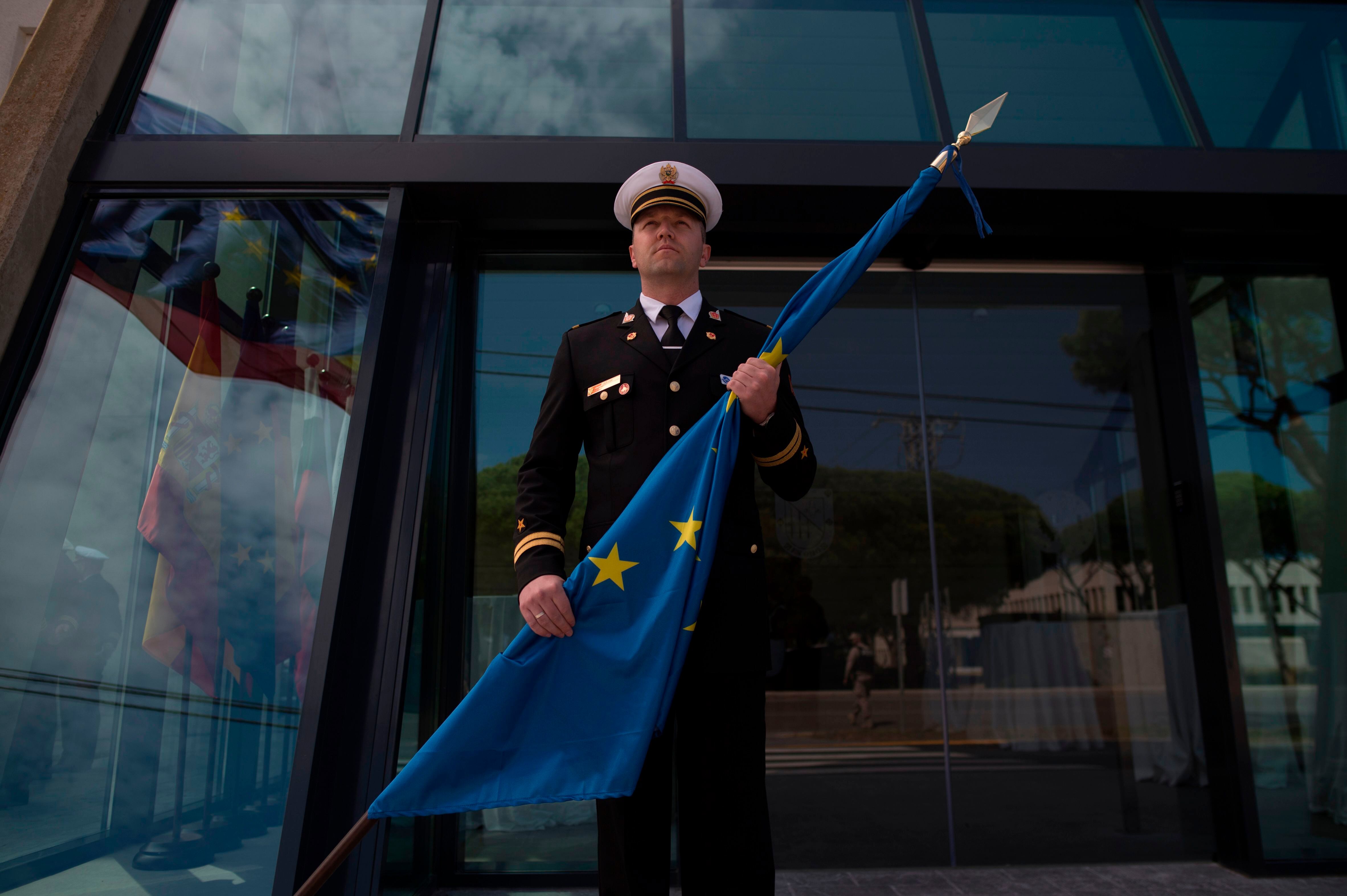BRUSSELS — The European Union has unveiled the latest batch of projects under its flagship defense-cooperation scheme, boosting the areas of training, cyber operations and naval warfare.
The decision, announced on Tuesday, brings to 47 the number of projects that are currently in place under the Permanent Structured Cooperation, or PESCO, initiative. The first two batches were adopted in the spring and fall of 2018.
Finnish Prime Minister Juha Sipilä, whose country is the current holder of the EU’s rotating presidency, welcomed the bloc's progress in security and defense cooperation, saying the PESCO schemes are “steps in the right direction.”
“We should now concentrate on implementation and reaching results,” he said.
The eventual aim of PESCO is to develop and deploy forces together, backed by a multibillion-euro fund for defense research and development
Two of the 13 new projects relate to efforts to counter cyber threats.
An envisioned EU Cyber Academia and Innovation Hub (EU CAIH), for example, could enhance the creation of an innovative web of knowledge for cyber defense and cybersecurity education and training.
The aim of another scheme, the Cyber and Information Domain Coordination Center (CIDCC), is to create a “standing multinational military element” where the participating member states “continuously contribute with national staff but decide sovereignly on case-by-case basis,” reads an EU announcement.
The Integrated European Joint Training and simulation Centre (EUROSIM) will integrate tactical training and simulation sites in Europe into a “real-time, networked, connected system.”
Another of the new PESCO projects, the European Union Network of Diving Centres (EUNDC), will coordinate and enhance the operation of EU diving centres in order to better support defense missions, while the European Patrol Corvette (EPC) will design and develop a prototype for a new class of military ship.
RELATED

The Maritime Unmanned Anti-Submarine System (MUSAS), meanwhile, aims to develop and deliver an advanced command, control and communications service architecture for anti-submarine warfare.
Elsewhere, the Special Operations Forces Medical Training Centre (SMTC) will focus on medical support for special operations and expand the Polish Military Medical Training Centre in Łódź.
One other new scheme is the CBRN Defence Training Range (CBRNDTR), which intends to accommodate what the EU calls a “full spectrum of practical training, including live chemical agents training.”
The Airborne Electronic Attack (AEA), also included in the latest batch, will allow European and NATO air forces to safely operate within EU territories while the Timely Warning and Interception with Space-based TheatER surveillance (TWISTER) scheme seeks to strengthen the ability of Europeans to better detect, track and counter air threats.
A scheme called “Materials and Components for Technological EU Competitiveness” (MAC-EU) will develop the European defense technology and industrial base while the EU Collaborative Warfare Capabilities (ECoWAR) initiative hopes to increase the ability of the EU armed forces to face “collectively and efficiently the upcoming threats that are more and more diffuse, rapid, and hard to detect and to neutralize.”
Jamie Shea, former Deputy Assistant Secretary General for Emerging Security Challenges at NATO, said the new projects “are good news for the EU at a time when President Macron is calling for the EU to step up its defense efforts and stand on its own feet. They show that PESCO is gaining traction in EU capitals and nations are buying in to the long overdue need to pool and share capability programs.”
Martin Banks covered the European Union, NATO and affairs in Belgium for Defense News.








